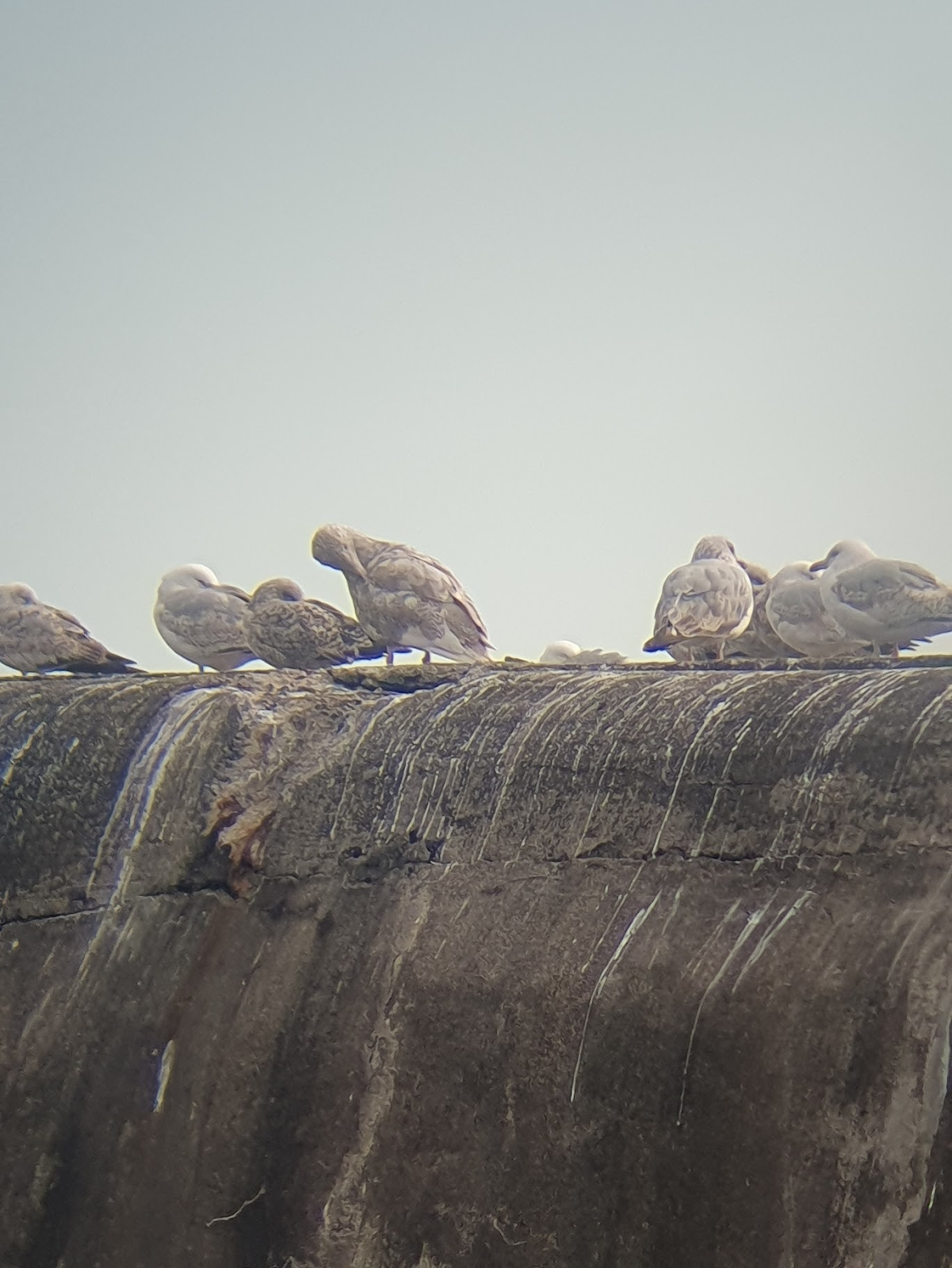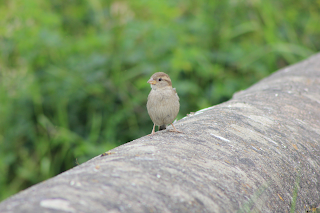Week 27
2 – 8 July 2025
During my big year, I will update my blog most weeks. This is the twenty-seventh week's recap. Last weekend, we were on the isles of Lewis & Harris, in the Outer Hebrides. The number next to the day indicates my year list at the end of that day. Birds written in italics indicate Scottish year ticks.
July 4 - Day 185: 183
Today, after spending the night at Ullapool Youth Hostel, we took the ferry to Stornoway, on the Isle of Lewis. I was excited to start seawatching on this well-known seabird and cetacean hotspot. After about ten minutes, however, my dad rushed over to tell me that they had just seen a Great Skua! This would have been a year tick, but unfortunately, I had missed it. I kept watching from the window, spotting countless Gannets and Guillemots. Eventually, I was treated with views of a group of Manx Shearwaters, a species that I had seen for the first time only two weeks ago, at my local patch, Girdleness, although they were very distant. The window I was waiting at, however, soon fogged up, and it became really difficult to see any birds. Therefore, I decided to head onto the open deck, where visibility was better. I soon spotted some more of the same species, as well as Puffins and Razorbills. Before long, we heard an announcement that the ferry was to deviate from it's intended trajectory in search of someone who had fallen off a vessel. This only meant more seawatching for me. I quickly spotted a few Arctic Terns and a Great Skua. Eventually, we were informed that it was in fact a false alarm. As we approached Stornoway, we saw a few pods of Common Dolphin and a Minke Whale. We also saw some Kittiwakes, and got some close views of Puffin, Razorbill, and Gannet.
Once we got off the boat, we start by walking around Lews Castle. We spotted some Blackbirds, Robins, and heard a Hebridean Wren, before walking back to Stornoway to get some lunch. Meanwhile, we spotted some Hooded Crows and got amazing views of a very tame Grey Heron.
After a delicious scone from the “Kofi Java” in Stornoway, we drove to RSPB Loch na Muilne, in search of the rare Red-necked Phalarope. We walked through some quite wet grass and moss before arriving at a viewpoint. Sadly, with wind and rain, we couldn't see anything from the viewpoint, so we decided to walk closer to the lake. Despite our best efforts, however, the birds were nowhere to be seen. We walked back to the car, through horizontal rain, mud, and hard-to-walk-on terrain. We were delighted to arrive that evening at our accommodation near Rodel, on the Isle of Harris.
July 5 - Day 186: 183
The next day, we expected more rain and wind, and the forecast was far from incorrect. With a break in the showers, we went to the North Harris Eagle Observatory, one of the best places in the British Isles to spot Golden Eagles. As we set out, we saw a juvenile Cuckoo, being fed by its Meadow Pipit foster parents - which were only a third its size! Other than a Common Sandpiper and a Song Thrush, there wasn't much to see before we got to the hide. Unfortunately, the fog had made it very difficult to see the cliff side that the eagles nest on, so, despite a thorough search, we didn't spot any eagles. We did see a Snipe, however, but a heavy shower put an end to our birding for the day.
That evening, I had a quick walk around our accommodation, spotting another Hebridean Wren, a Robin, Hooded Crows, a Greenshank, a Grey Heron, Robins, and a Wheatear.
July 6 - Day 187: 184
With some better weather forecast on our last day on the Hebrides, my dad and I woke up at quarter to five, since that was sunrise, and we were hoping to hear some Corncrake. Our friend Rob Leslie gave us a tip of Corncrake at Northton, near Leverburgh. Since it was only 20 mins away, we decided to give it a shot. We arrived slightly after 5, and, after about a half hour, walking up and down the roads, no sign of any Corncrakes. We had seen, however, a family of Stonechats, Robins, Common Gulls, Oystercatchers and Hooded Crows. Suddenly, my dad spotted a bird, drifting slowly towards us, in the distance. As it approached, we could confirm that it was a White-tailed Eagle! We walked onto the beach, where we stopped to enjoy the view, and watch some Gannets and Arctic Terns, diving to catch fish in the water. We then made our way through some agricultural fields, where we were mobbed by almost every species of wader you could think of! Oystercatchers, Lapwing, Redshank, and Snipe were all flying over our heads and calling loudly. We later bumped into a flock of sheep, but still no sign of any Corncrakes. We headed back, unsuccessful, to Rodel.
With more fab weather coming up, we had another quick walk around Rodel, with the rest of the family. We had a selfie in the sunshine, and saw a few more birds, including a Pied Wagtail Willow Warbler, and another young Cuckoo. As we drove out of Rodel, we noticed another eagle gliding over a hill. We stopped, completely legally, on the side of the road, to watch as it got mobbed by Ravens, and Hooded Crows. We later identified the bird as young White-tailed Eagle. On the way up to Lewis, we stopped at Seilebost beach, where we enjoyed wonderful views of the beach, which looked like an island in the West Indies! We could see over to Taransay, although, we didn't see many birds, other than some Meadow Pipits, Skylarks, and a juvenile Wheatear.
After driving through some spectacular landscapes, we arrived at the Clannish Standing Stones, a historical structure, which is believed to have been used as a grave for important people of the hunter-gatherer tribes that inhabited the islands.
We then made our way to RSPB Loch na Muilne, to try again for the phalaropes. Upon arrival, we spotted a Buzzard, and met a group of birders, probably from a guided tour, and asked them if they had seen the birds. They said that they had, but that the birds were hard to seen and that only a few of the group members had got eyes on them. We walked onwards, crossing our fingers. Only a couple seconds after having set up my scope at the viewpoint, I noticed two small waders flying in circles over the lake. Red-necked Phalaropes! We around the lake to view them from a different angle, but, realising we may be disturbing them, we turned back. The Red-necked phalarope is one of the rarest of the UK's breeding waders, only found on the Uists, Benbecula, and Shetland. They are one of only a handful of species that display reversed sexual dimorphism. This is when the females are more brightly coloured (and often larger) than the males. Unlike in most species, male Red-necked Phalaropes will incubate and take care of the young, while the females search for food. We were very lucky to see these birds, since my chances of seeing them again this year are very low.
After a great success, we drove to Stornoway, where our ferry was leaving from. We went to a café before leaving, where we had a Guinness cake, and some drinks. We then boarded the ferry, back to the mainland.
On the ferry, we watched as up to 6 Arctic Skuas mobbed a group of Kittiwakes and also saw Puffins, Guillemots, Razorbills, Manx Shearwaters, Great Skuas, Fulmars, a Red-throated Diver, and a lot of Gannets. Cetacean wise, we saw a couple of Minke Whales, a Porpoise, a pod of Bottlenose Dolphins and a few pods of Common Dolphins.
Days 185 - 187: https://ebird.org/tripreport/392746















































